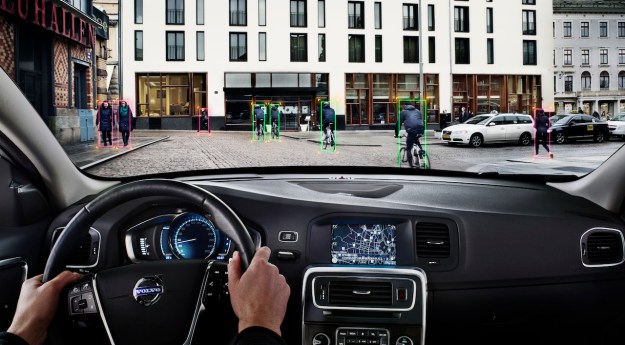
Volvo is marching right along toward their goal of zero fatalities involving a Volvo car by 2020. They already stand as the first automaker in the world to introduce an available suite of detection and auto brake technologies in their cars.
Now, they’re adding one more safety feature to the mix.
Called “Cyclist Detection with full auto brake,” it works alongside its already state-of-the-art detection system, Pedestrian Detection.
First introduced in 2010, Pedestrian Detection watches the roadway ahead of the vehicle with both a grille-mounted radar and a windshield-mounted video camera.
Cyclist Detection uses those same sensors and works very much the same way. Should a cyclist – headed in the same direction as the Volvo – swerve in front of the vehicle as the car approaches from the rear, the system will warn the driver and bring the vehicle to a complete and sudden stop – all without driver intervention.
This only works, however, if both the radar sensor and video camera both confirm the imminent collision with the cyclist.
According to Volvo’s figures, about half of all European cyclists’ deaths are caused by a collision with a car. Cyclist Detection with full auto brake will certain help to decrease those numbers.
Starting in mid-May, all new Volvo models fitted with Pedestrian Detection in Europe will also include Cyclist Detection. We asked a U.S. Volvo representative when this technology would be available in the American market.
We have yet to receive a response but as soon as we do, we’ll be sure to update you.


